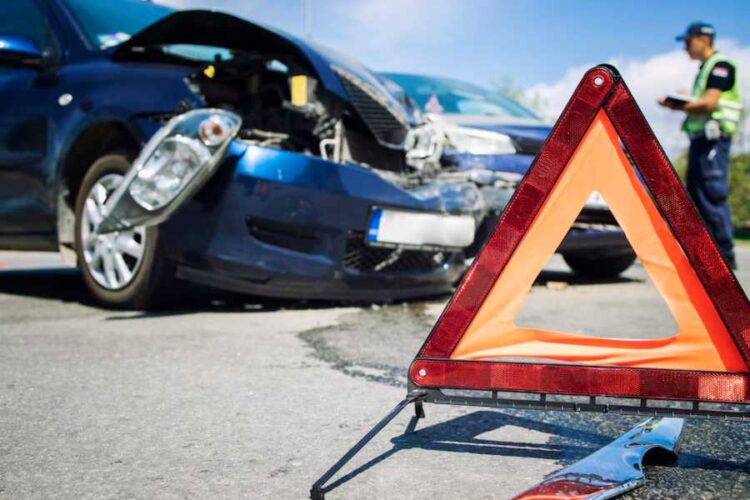Truck accidents are terrifying, unexpected, and sometimes life-changing events. They can cause serious injuries, emotional trauma, financial loss, and complex legal battles. Knowing what to do after a truck accident is crucial if you are a driver, passenger, or pedestrian. The first few minutes after a crash are chaotic, but your response can have a significant impact on your health, safety, legal status, and compensation.
The size and weight of business trucks make accidents especially dangerous. The Federal Motor Carrier Safety Administration (FMCSA) reports that over 500,000 truck accidents occur in the U.S. annually. Several vehicles are often involved in accidents, which create complicated investigations when trucking companies, insurance agencies, and lawyers are involved.
Thus, what do you do immediately following a truck accident? How do you protect your rights, get the right medical care, and get proper documentation for insurance and legal purposes?
This guide will demonstrate what to do following a truck accident—from the accident scene to recovery later. Understanding your responsibilities and rights will make you a better-informed decision-maker whether you have minor or significant damage.
We’ll also break down medical interventions, legal obligations when to require an attorney, and how to deal with insurance companies strategically. Ready to receive the help you deserve? Let’s dive into the key steps after a truck accident.
What to do after a truck accident?
Look for injuries and call 911. Seek medical care immediately, even if you’re fine. Gather evidence—photos, witness statements, and police reports. Never apologize or accept blame. Report the crash to your insurance company and talk to a personal injury lawyer to protect your legal rights. Keep everything documented for claims and legal purposes.
Why Immediate Action Matters After a Truck Accident?
The minutes following a truck accident are typically confusing, overwhelming, and chaotic. But knowing what to do right after a truck accident is important to your safety, legal rights, and financial recovery. Your well-being—and that of others—should always come first. Move out of the vehicle to a safe location, engage your hazard lights, and call 911 immediately. Even if you feel fine, seek medical attention, as injuries like internal bleeding or concussions aren’t always immediately apparent.
It’s equally critical to avoid making any statements that could be interpreted as an admission of fault. Even a simple “I’m sorry” might be used against you in court or by insurance adjusters. Let law enforcement handle the official report and documentation.
If you’re able, start gathering evidence at the scene. Take clear photos of all vehicle damage, license plates, injuries, and road conditions. Exchange information with the truck driver, including their license and insurance card. Talk to any witnesses and try to get their contact information. Consulting a Gurnee truck accident lawyer early on can also be a game-changer—helping you avoid legal pitfalls and protect your rights from the very beginning.
Why is this important? Because the actions you take immediately after the accident can either strengthen or weaken future claims. Whether it leads to an insurance settlement or a court case, staying calm, being precise, and getting legal guidance puts you in control. Before making any official statements, contact an attorney—large trucking companies have seasoned legal teams, and you should, too.
How to Manage the Crash Scene in the Immediate Post-accident?
Remain calm and always think about safety.
Feelings are running high following a truck accident. The first thing to do is remain calm. Your physical and mental concentration can significantly impact what happens next. Check yourself and your passengers for injuries. Even if you are not injured, be cautious—adrenaline may mask pain or evidence of injury. What to do after a truck accident begins with ensuring that your safety is addressed.
Call Emergency Services Without Delay
Once you’ve assessed the situation, call 911. Request police and medical assistance, even if injuries seem minor. The presence of law enforcement is crucial, as they will file an official accident report—something that will serve as valuable evidence in your insurance or legal case.
Move to a Safer Location If Possible
If your vehicle is still operational and you are not seriously hurt, move it to a safe area away from traffic. Being stuck in traffic can put you and other people at risk of further harm. Activate your hazard lights and use warning triangles or cones if you have them.
Exchange Information Professionally
Stay courteous while interacting with the truck driver and swapping important information. This should be names, telephone numbers, driver’s license numbers, license numbers, insurance policy details, and the name of the truck company. Do not argue or presume.
Start Gathering Solid Evidence
Documentation is critical in any truck accident. Take clear, high-resolution photos of vehicle damage, skid marks, injuries, traffic signs, and road conditions. If witnesses are present, take down their names and contact information. Their statement could be critical in supporting what happened.
What to Document After a Truck Accident?
Do you know what to do after a truck accident? Includes one step that is absolutely essential: documentation. Important evidence can significantly impact the success of your insurance claim or lawsuit. The more that you obtain, the better that you will be able to determine what happened and receive the full compensation that you are entitled to. Here is the complete checklist of what you should document immediately after a truck accident:
Driver & Truck Details: Collect the name of the truck driver, their contact information, license number, license plate, Department of Transportation (DOT) number, insurance provider, and trucking company name.
Photos & Videos: Record good-quality photos with your mobile of the accident location. Capture all vehicle damage, observable injuries, road signs, traffic lights, skid marks, weather conditions, debris, as well as any damaged nearby property.
Medical Records: Get copies of every medical record regarding the accident, including emergency room visits, hospital stays, prescriptions, doctor’s notes, and diagnostic tests like X-rays or MRIs.
Police Report: Get the responding officer’s name, badge number, and official police report. The police report is most likely an objective report of the collision.
Witness Information: Get the names, phone numbers, and email addresses of any witnesses who saw the crash. Their testimony can corroborate your testimony.
Personal Notes: As soon as possible, jot down all the details you remember. Note the time, weather, what you saw, how the crash occurred, and anything the other driver mentioned.
Why Medical Attention Is Important Even If You’re Fine
One of the most forgotten procedures in figuring out what to do after a truck accident is receiving a prompt medical examination—regardless of how fine you are feeling. Most of the most severe injuries, such as whiplash, internal bleeding, or concussions, will not manifest themselves at first. Failing to treat them or not treating them will exacerbate your condition and nullify any probable legal or insurance claims.
Physicians are instructed to look for hidden injuries that may not be immediately evident on the scene. By going in to be examined early, you establish a medical history linking your injuries to the accident. This becomes key when it comes to fighting insurance adjusters or making your case in court.
Not seeing a doctor soon enough after the accident can make insurers question the legitimacy or severity of your injuries. Even slight pain could be something more serious. Waiting also makes it harder to prove that the accident caused your injuries.
Always follow recommended treatments and appointments. Careful treatment protects your health and supports your claim.
When to Call an Attorney After a Truck Crash?
Do you know what to do in the event of a truck accident? It’s not always simple—especially when the legal process kicks in. Truck accidents are far more complex than regular car crashes, typically with multiple responsible parties and plenty of money involved. Here’s when you should seriously consider hiring an attorney:
When More Than One Party Is Involved: Truck accidents typically involve the driver, the trucking company, the vehicle manufacturer, and their insurers. The lawyer will identify the parties at fault and ensure that all the parties at fault are brought to court.
Preserve Critical Evidence: Commercial trucks have “black boxes” that record speed, braking, and other vital data. A lawyer can send a spoliation letter so that such evidence is not erased or destroyed—something a layperson may have no idea how to do.
To Bargain with Insurance Companies: Insurance companies play it tough when negotiating to keep you from collecting fair compensation. An attorney protects your rights, handles correspondence, and avoids pitfalls like taped statements that destroy your case.
To Obtain the Greatest Compensation: Experienced attorneys gauge immediate and ultimate damages, e.g., medical expenses, physical rehab, loss of wages, and suffering and agony. You may settle for considerably less than your case deserves without a lawyer.
To Comply with Legal Timelines: Every state has a personal injury statute of limitations. Losing the deadline loses your right to compensation. An attorney makes sure you file everything timely and appropriate.
Final Thoughts
Knowing what to do after a truck collision is not common sense but a survival technique. From obtaining medical attention to safeguarding your legal rights, each step from the moment of the accident shapes your recovery from physical injury and financial restitution. Bigger trucks bring bigger ramifications, and navigating the legal labyrinth is not an activity to engage in by oneself. Act immediately, record comprehensively, and acquire professional assistance to secure your future.
FAQ’s
Q. What should I not do following a truck crash?
A. Don’t acknowledge fault, even casually. Don’t skip medical tests or post about the crash on social media. These actions can be used against you when making insurance claims or in court cases.
Q. When should I seek medical care?
A. Visit a doctor within 24 to 48 hours of the accident. Early medical examination may detect hidden injuries and create a documented link between the accident and your health status.
Q. Do I require an attorney for a minor truck accident?
A. Even seemingly minor truck accidents usually involve involved insurance and legal issues. A personal injury attorney can inform you of your rights and secure you a reasonable offer.
Q. Can I sue the trucking company?
A. You may sue the trucking company if their negligence caused the accident. That includes improper training, poor maintenance, violation of hours of service, or nonadherence to safety regulations.
Q. How much time do I have to file a truck accident claim?
A. The time limit varies by state, typically between one and three years. Speaking with a lawyer promptly ensures you meet the legal deadlines and preserve your right to compensation.









